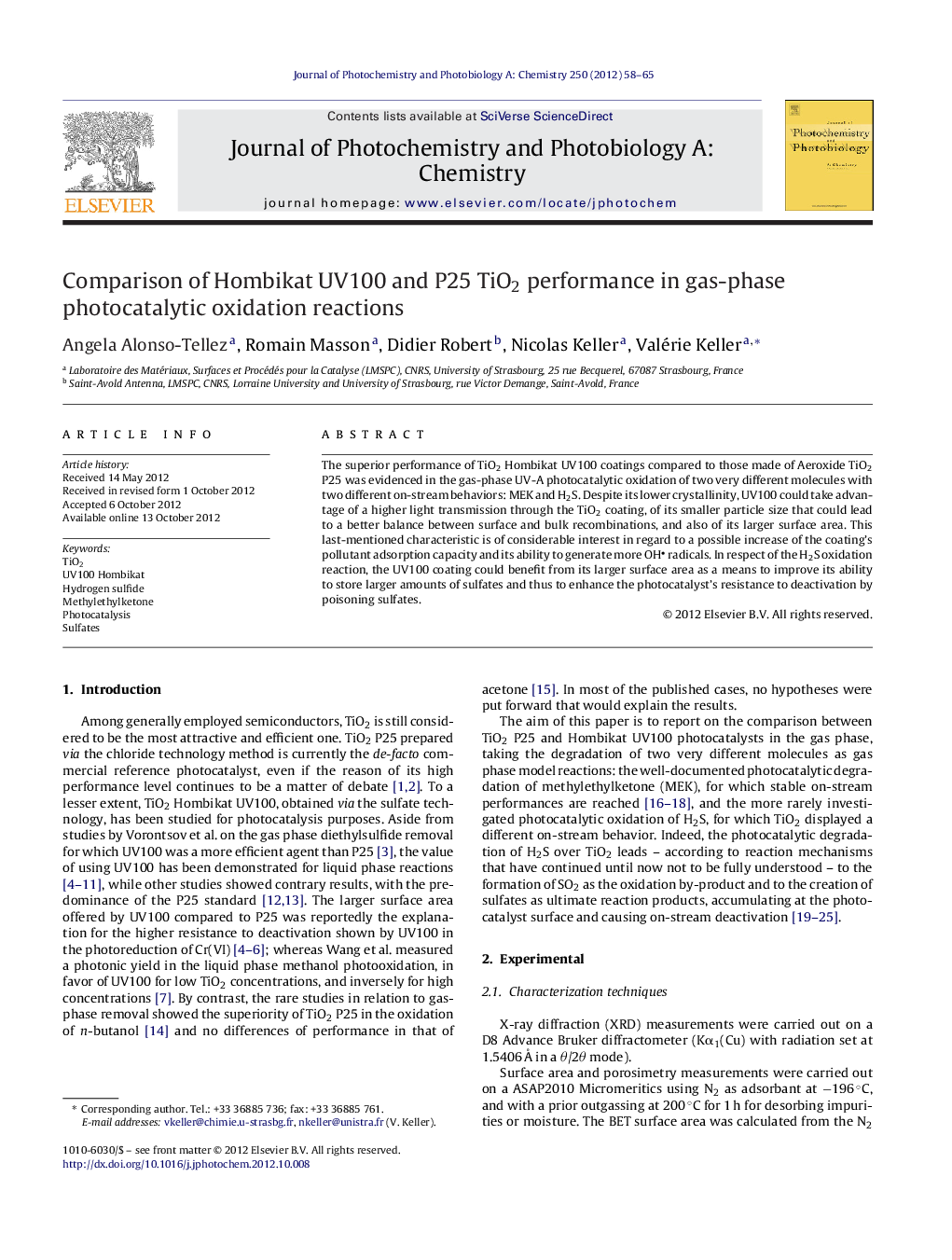| Article ID | Journal | Published Year | Pages | File Type |
|---|---|---|---|---|
| 27863 | Journal of Photochemistry and Photobiology A: Chemistry | 2012 | 8 Pages |
The superior performance of TiO2 Hombikat UV100 coatings compared to those made of Aeroxide TiO2 P25 was evidenced in the gas-phase UV-A photocatalytic oxidation of two very different molecules with two different on-stream behaviors: MEK and H2S. Despite its lower crystallinity, UV100 could take advantage of a higher light transmission through the TiO2 coating, of its smaller particle size that could lead to a better balance between surface and bulk recombinations, and also of its larger surface area. This last-mentioned characteristic is of considerable interest in regard to a possible increase of the coating's pollutant adsorption capacity and its ability to generate more OH radicals. In respect of the H2S oxidation reaction, the UV100 coating could benefit from its larger surface area as a means to improve its ability to store larger amounts of sulfates and thus to enhance the photocatalyst's resistance to deactivation by poisoning sulfates.
Graphical abstractFigure optionsDownload full-size imageDownload as PowerPoint slideHighlights► TiO2 UV100 is superior to P25 for the gas-phase UV-A photocatalytic oxidation of methylethylketone and H2S. ► It benefits from a higher light transmission through the photocatalyst coating and a greater surface area. ► It improves the resistance to photocatalyst deactivation by surface poisoning sulfates.
